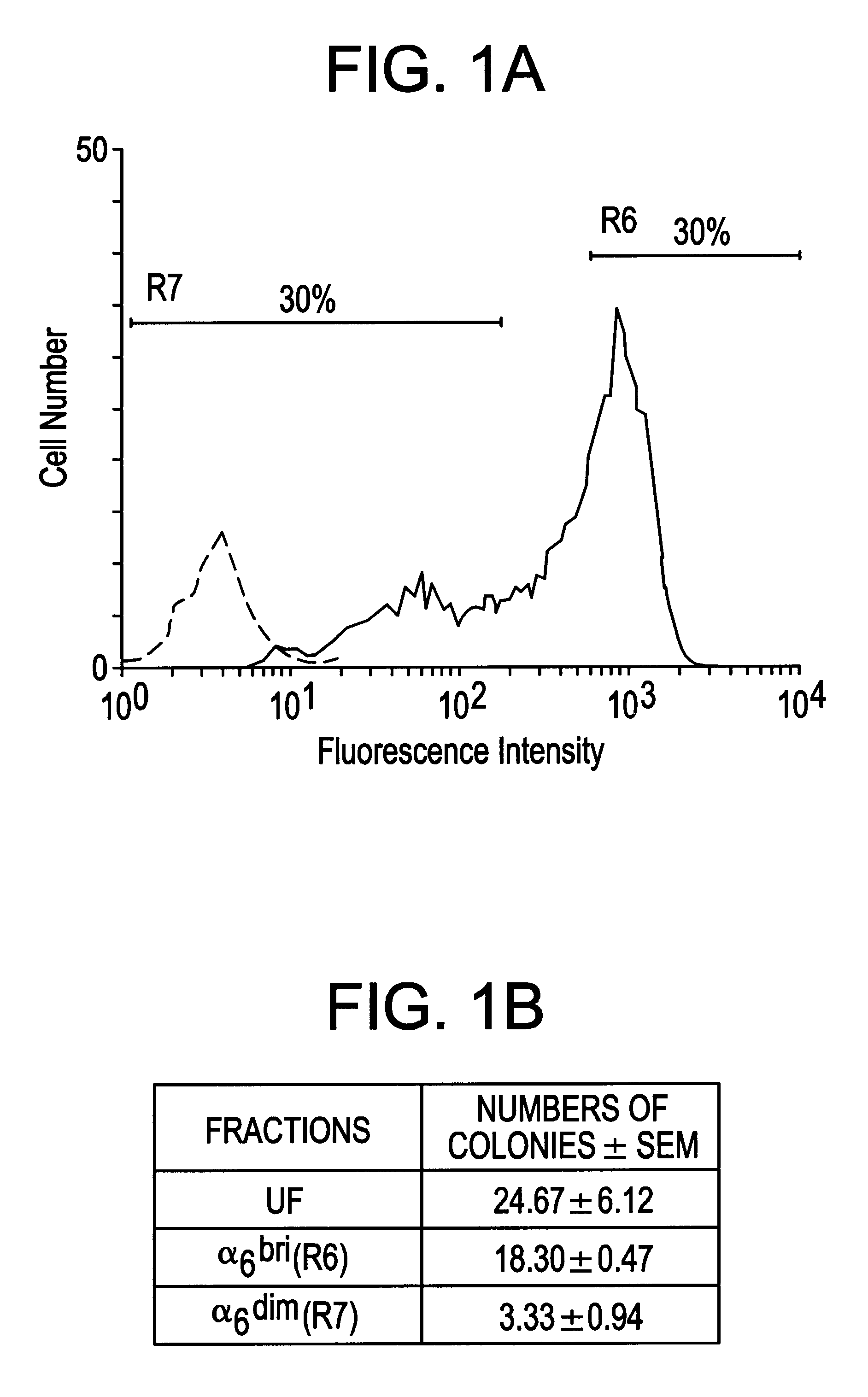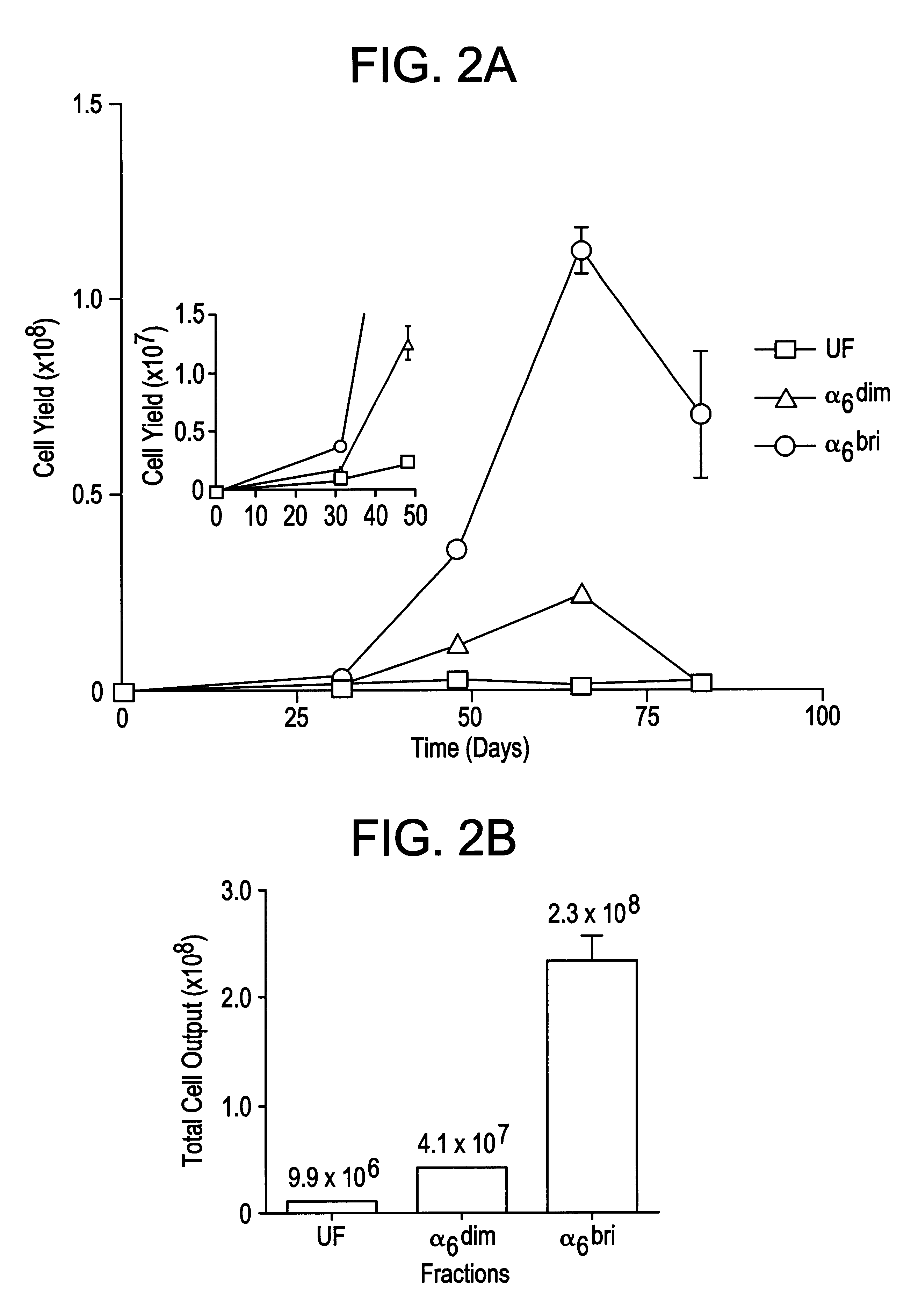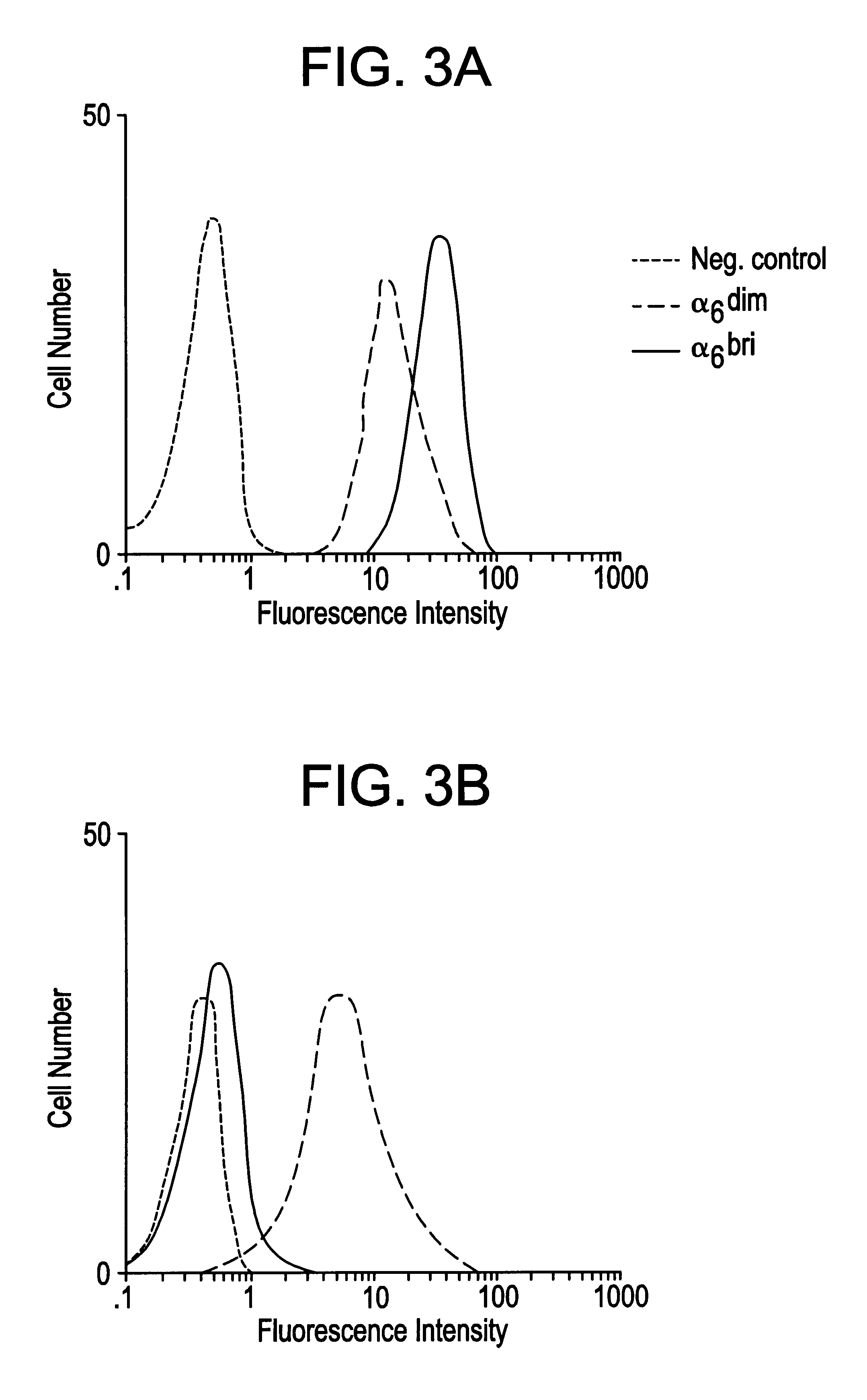Keratinocyte stem cells
a technology of keratinocytes and stem cells, applied in the field of keratinocyte stem cells, can solve the problems of relatively poorly defined cell surface antigen phenotype of these cells, no molecular markers to distinguish, etc., and achieve the effects of reducing the number of cells, enhancing the capacity to find, and enhancing the understanding of these early proliferative events
- Summary
- Abstract
- Description
- Claims
- Application Information
AI Technical Summary
Benefits of technology
Problems solved by technology
Method used
Image
Examples
example 2
The ability to regenerate epithelium in vivo is an important property of KSCs, and an important prerequisite to the development of gene therapeutic approaches aiming to deliver gene products from skin grafts. This proposed example includes the steps of taking purified KSCs to generate epidermal tissue, which can then be utilised to graft onto individuals.
It is proposed to determine the ability of KSCs to reconstitute an epidermis in the living skin equivalent model of organotypic cultures, a number of these systems are presently being used. This in vitro model system has been extensively used to study the effects of various factors on keratinocytes to proliferate and differentiate into a normal multilayered epidermis and exhibit appropriate gene expression. Basal keratinocytes fractionated into the candidate KSC and TA subpopulations as described earlier may be placed in the organotypic culture system. The cultures can be analysed for morphological and biochemical characteristics to...
PUM
| Property | Measurement | Unit |
|---|---|---|
| cell surface | aaaaa | aaaaa |
| purity | aaaaa | aaaaa |
| composition | aaaaa | aaaaa |
Abstract
Description
Claims
Application Information
 Login to View More
Login to View More - R&D
- Intellectual Property
- Life Sciences
- Materials
- Tech Scout
- Unparalleled Data Quality
- Higher Quality Content
- 60% Fewer Hallucinations
Browse by: Latest US Patents, China's latest patents, Technical Efficacy Thesaurus, Application Domain, Technology Topic, Popular Technical Reports.
© 2025 PatSnap. All rights reserved.Legal|Privacy policy|Modern Slavery Act Transparency Statement|Sitemap|About US| Contact US: help@patsnap.com



